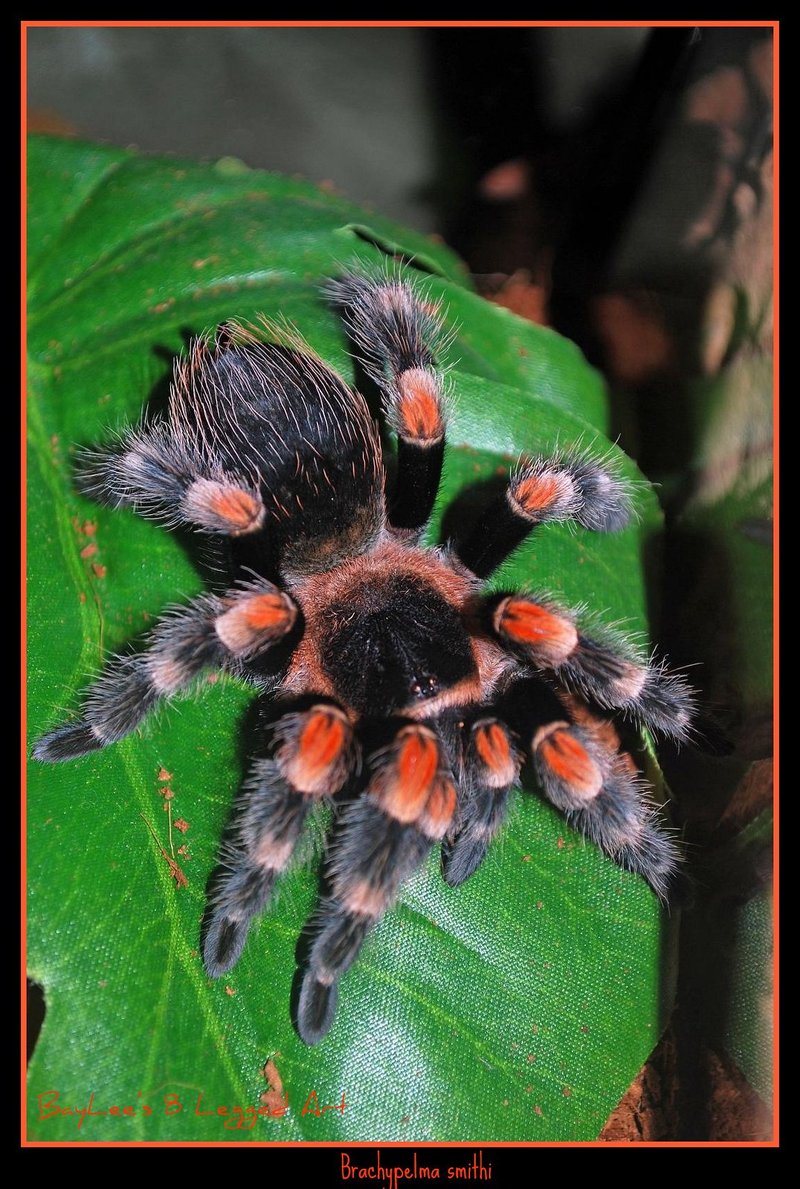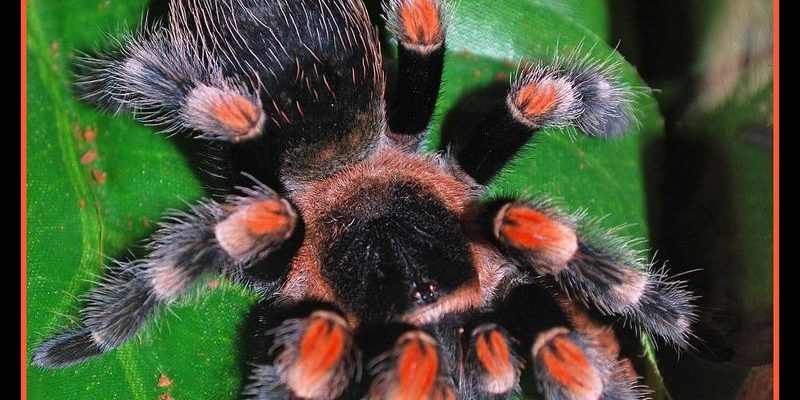
These spiders are native to Mexico, specifically in the dry, arid regions. Their bright red-orange knees against a black body create a stunning contrast, almost like nature’s own version of a fashion statement. But there’s more to them than just looks! Let’s delve into some intriguing facts about the Mexican redknee tarantula, exploring their behavior, habitat, and why they’re so beloved by many.
1. Home Sweet Home: Natural Habitat
The Mexican redknee tarantula makes its home in the dry, scrubby landscapes of Mexico. They prefer warm, arid environments, often found beneath rocks or in burrows where they create a cozy retreat. Picture a little cave made by the tarantula, where it can hide from predators and escape the heat of the sun. This underground dwelling not only provides safety but also helps retain moisture.
These tarantulas are primarily terrestrial, meaning they spend most of their time on the ground rather than climbing trees. During the day, they often stay hidden, coming out at night to hunt for their food. They mainly feast on insects like crickets and grasshoppers, which they catch using their swift movements and powerful fangs. Honestly, it’s a bit like watching a mini predator in action—a fascinating dance of survival in the wild.
2. Unique Appearance and Coloration
The Mexican redknee tarantula is easily recognized by its striking coloration. Its body is mostly black, but those vibrant red or orange markings on its knees really make it stand out. You might even think of it as wearing a flashy pair of knee pads! This coloration serves a purpose beyond just looks; it plays a role in their defense mechanism. If threatened, they can kick hairs off their abdomen as a warning signal, which can irritate predators’ skin.
When you see one in person, the beauty of these tarantulas is truly impressive. But it’s not just their looks that are notable; it’s also how they change as they grow. Young tarantulas have different coloration patterns compared to adults, which will develop as they mature. This transformation is part of a process called molting, where they shed their old exoskeleton to allow for growth. Imagine the thrill of witnessing a creature change right before your eyes!
3. Behavior: Shy but Fascinating
You might be surprised to learn that, contrary to popular belief, the Mexican redknee tarantula is generally shy and non-aggressive. They don’t chase after humans or other animals, preferring to avoid confrontations when possible. Instead of acting fearfully aggressive, they rely on their natural camouflage and burrow habitats for protection. If they feel threatened, they tend to hunker down rather than make a fuss.
But don’t be fooled by their docile nature! When they feel safe, these tarantulas can exhibit some interesting behaviors. They are known to use *webbing* to create silky retreats in their burrows. This webbing isn’t just for show; it helps them catch prey and keep track of their surroundings. Watching a tarantula spin a web is like seeing an artist at work—there’s a certain elegance to it that leaves you in awe.
4. Care as Pets: Ideal Companions for Beginners
One of the reasons the Mexican redknee tarantula is so popular among pet enthusiasts is its relatively low maintenance needs. If you’re just dipping your toes into the world of exotic pets, this tarantula is a great starting point. They don’t need a massive enclosure. A simple terrarium with proper ventilation, some substrate for burrowing, and a hiding spot is all you need.
It’s also essential to ensure their environment mimics their natural habitat as closely as possible. *Temperature and humidity* play a vital role in their overall health. Keeping the terrarium warm (around 75-85°F) and slightly humid will help your tarantula thrive. And, here’s the thing: you don’t need to feed them every day. Once a week is usually enough to keep them satisfied. It’s like having a furry roommate who, while quiet, is pretty easy-going.
5. Lifespan and Growth: A Slow Journey
If you’re considering bringing a Mexican redknee tarantula into your life, you’ll be pleased to know that these creatures have a pretty impressive lifespan. Female tarantulas can live up to 25 years or more, while males have a shorter lifespan of about 10 years. This extended lifespan means you’ll have a long time to bond and observe their unique personalities.
Growth is slow and steady for these spiders. Each time they molt, they can grow just a little bit larger. This process can take several weeks to even months depending on their age and environmental conditions. If you’ve ever watched a child grow, you can imagine the patience needed as you wait for your tarantula to reach its full size. Each milestone is worth celebrating, as it brings you one step closer to a majestic adult.
6. Conservation Status: Protecting the Future
While the Mexican redknee tarantula is popular in the pet trade, their populations in the wild face challenges. Habitat loss due to deforestation and environmental degradation are significant threats. Luckily, conservation efforts are underway to help protect their natural habitats and ensure their survival.
Being aware of where you get your pet is crucial. Make sure to choose reputable breeders who follow ethical practices. This way, you can enjoy the beauty of these fascinating spiders while supporting efforts to keep their populations stable in the wild. It’s a bit like being a guardian of nature’s wonders—taking care of the creatures we share our planet with.
7. Fun Facts: Quirky Tarantula Tidbits
To wrap up our exploration, here are some fun facts that might just surprise you:
- The Mexican redknee tarantula can live without food for several weeks, thanks to its slow metabolism.
- They’re often less sensitive to their surroundings compared to other tarantulas, making them more tolerant of handling.
- In the wild, they can be found both above and below ground, showcasing their versatility in adapting to various environments.
- Some people even claim that their bite feels like a bee sting—definitely less dramatic than it sounds!
These facts only scratch the surface of what makes the Mexican redknee tarantula such an intriguing creature. Whether you’re considering one as a pet or simply have a fascination for these spiders, they hold a special charm that’s hard to deny.
In conclusion, the Mexican redknee tarantula is not just another creepy-crawly. With their striking appearance, gentle temperament, and unique behaviors, they offer a window into the amazing world of arachnids. Learning about them can make us appreciate the diversity of life on our planet. So, the next time you hear a whisper about tarantulas, remember the fascinating world of the Mexican redknee—it just might surprise you!

